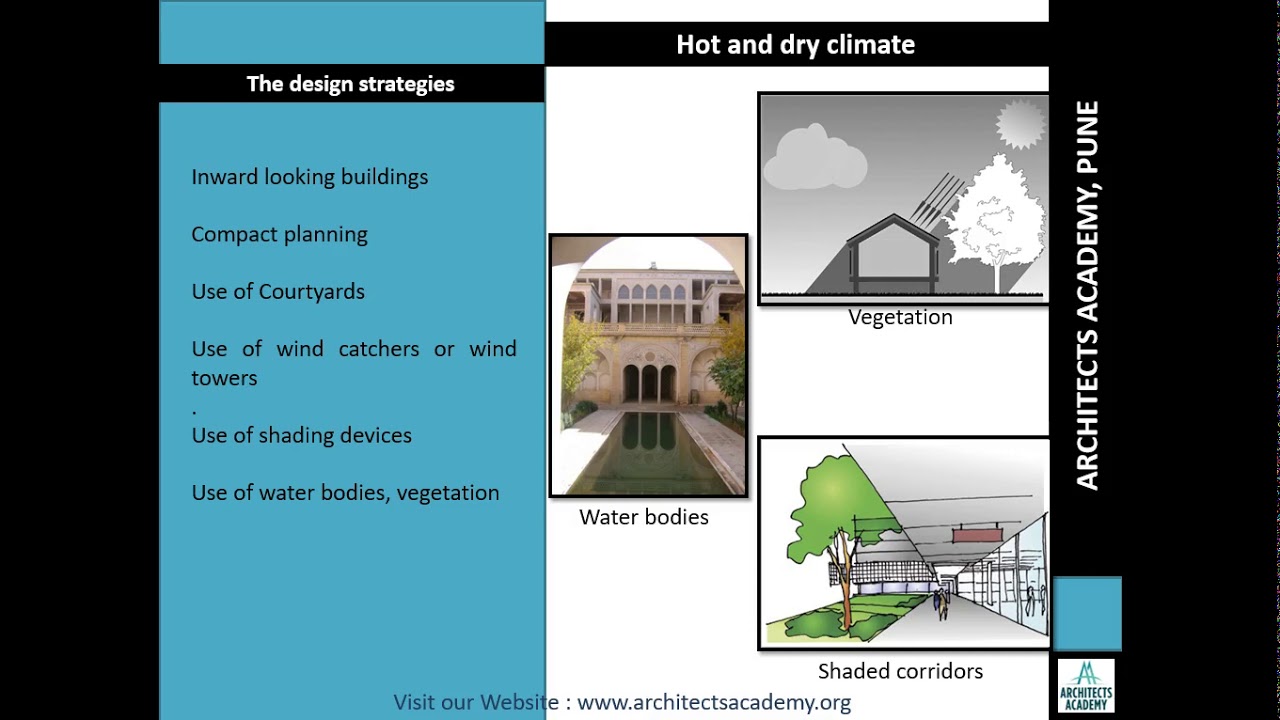The Influence Of Geography And Climate On Architecture
The environment in which a structure is built plays a crucial role in determining its design and construction. Architects must consider the local climate, terrain, and available resources when designing a building that can withstand natural elements and provide a comfortable space for inhabitants.
Author:George EvansJul 10, 20258K Shares322.3K Views

The influence of geography and climate on architectureis undeniable. The environment in which a structure is built plays a crucial role in determining its design and construction.
Architects must consider the local climate, terrain, and available resources when designing a building that can withstand natural elements and provide a comfortable space for inhabitants.
This article will explore how geography and climate shape the architecture of different regions and the unique design elements that emerge as a result.
The Influence Of Geography And Climate On Architecture
Continuing from the previous paragraph, the influence of geography and climate on architecture is not only limited to the practicalities of materials and structural design.
It also plays a significant role in shaping the cultural and aesthetic traditions of a region. In some cases, the architecture of a region becomes an integral part of its identity, representing its cultural heritage and sense of place.
For example, traditional Japanese architecture reflects the country's geography and climate. The wooden structures are designed to be flexible, allowing them to withstand earthquakes, and are elevated to protect against floods.
The roofs are sloped to prevent snow accumulation, and the design includes features like shoji screens, allowing natural light to enter while maintaining privacy.
Similarly, the adobe buildings of the American Southwest reflect the region's hot and dry climate. The thick walls provide insulation against the heat, while the flat roofs offer protection from the sun.
The traditional rounded structures, called kivas, were used for religious ceremonies and were designed to stay cool even in the heat of summer.
The architecture of a region can also be influenced by prevailing cultural and artistic traditions. In many cases, these traditions are rooted in the geography and climate of the area.
For example, the intricate stone carvings of Indian temples are a reflection of the abundant stone resources in the region. The colorful tiles and mosaics of Mediterranean buildings are a reflection of the vibrant flora of the region.
Geography And Architecture
Geography plays a critical role in shaping the architecture of a region. The availability of materials and terrain greatly impacts the design and construction of buildings.
In areas with abundant natural resources, buildings are often made of locally sourced materials such as stone, clay, and timber. These materials are used because they are readily available and can withstand the natural elements of the area.
For example, in regions with hot and arid climates, homes are typically constructed using adobe or mud bricks that offer natural insulation against the heat. In colder regions, the design of homes often includes thicker walls and insulation materials to keep the interior warm.
In addition to materials, the terrain also influences the architecture of a region. In areas with rugged terrain or steep slopes, buildings may be constructed using materials that allow for easy construction on uneven surfaces.
For example, in mountainous regions, homes are often constructed using stone or timber because they can be more easily integrated into the landscape.
Climate And Architecture
The climate also plays a critical role in shaping the architecture of a region. In regions with extreme weather conditions, buildings must be designed to withstand the natural elements.
For example, in areas prone to hurricanes or strong winds, buildings are often constructed using reinforced concrete or steel to prevent damage. In regions with frequent earthquakes, buildings are designed to withstand seismic activity by using special materials and construction techniques.
In areas with hot climates, buildings must be designed to keep the interior cool.
In such regions, the design often includes features like wide roof overhangs, shaded courtyards, and ventilation systems to allow for natural airflow. In contrast, regions with cold climates require buildings to be designed to keep the interior warm.
These buildings often have thicker walls, and insulation, and are oriented to take advantage of sunlight to help heat the interior.

Climate and Architecture
Regional Architecture
Different regions have their unique architecture, which reflects the geography and climate of the area. For example, the architecture of coastal regions often includes features that allow for easy access to the sea, such as piers or balconies that offer views of the water.
In contrast, the architecture of desert regions often includes features that protect against extreme heat, such as thick walls and small windows. In mountainous regions, buildings often have steeply pitched roofs to prevent snow accumulation and a more robust structure to withstand the strong winds.
In tropical regions, buildings are designed to withstand heavy rainfall and high humidity. The architecture often includes large overhanging roofs and raised foundations to prevent flooding. The use of natural materials, such as bamboo or thatched roofs, is also common in these regions.
People Also Ask
How Do The Geography And Climate Of A Region Influence Traditional Japanese Architecture?
The wooden structures are designed to be flexible to withstand earthquakes and are elevated to protect against floods. The roofs are sloped to prevent snow accumulation, and the design includes features like shoji screens, allowing natural light to enter while maintaining privacy.
What Is The Significance Of The Adobe Buildings In The American Southwest?
The thick walls provide insulation against the heat, while the flat roofs offer protection from the sun. The traditional rounded structures, called kivas, were used for religious ceremonies and were designed to stay cool even in the heat of summer.
How Do Indian Temples Reflect The Geography Of The Region?
The intricate stone carvings are a reflection of the abundant stone resources in the region.
What Are The Characteristics Of Mediterranean Buildings That Reflect The Climate Of The Region?
The colorful tiles and mosaics are a reflection of the vibrant flora of the region.
How Do Contemporary Architects Incorporate Sustainable Design Principles In Buildings That Reflect The Natural Environment?
Contemporary architects draw inspiration from the natural environment and incorporate features like sloping roofs to prevent rainwater accumulation and ventilation systems to allow for natural airflow.
Conclusion
In conclusion, the influence of geography and climate on architecture is significant. Architects must consider the local environment when designing buildings that can withstand natural elements and provide a comfortable living space for inhabitants.
The availability of materials, terrain, and climate all play a significant role in shaping the architecture of different regions. As a result, the architecture of each area is unique and reflects the geography and climate of the area.
Understanding these factors is crucial for architects to create sustainable and functional buildings that can withstand the natural elements of the area.
The influence of geography and climate on architecture will continue to shape the built environment as architects strive to create structures that are both functional and aesthetically pleasing.

George Evans
Author
George Anderson, an exceptional architectural designer, envisions and brings to life structures that transcend the realm of imagination. With an unwavering passion for design and an innate eye for detail, George seamlessly blends form and function, creating immersive spaces that inspire awe.
Driven by a deep appreciation for the interplay of space, light, and materials, George's innovative approach redefines the possibilities of architectural design. His visionary compositions leave an indelible mark, evoking a sense of wonder and transforming the built environment.
George Anderson's transformative designs and unwavering dedication continue to shape the architectural landscape, pushing the boundaries of what is possible and inspiring generations to come.
Latest Articles
Popular Articles
